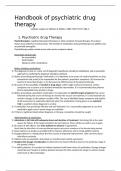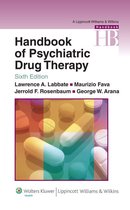Summary
Samenvatting/Summery Handbook of Psychiatric Drug Therapy - Psychopharmacology ()
- Course
- Institution
- Book
Samenvatting van Lawrence Labbate and others. Handbook of Psychiatric Drug Therapy. Lippincott, Williams & Wilkins. ISBN 978-07-8177-486-4 voor het vak Psychopharmacology aan de Universiteit Utrecht. Summery from Handbook of psychiatric drug therapy for the course psychopharmacology (Universit...
[Show more]




